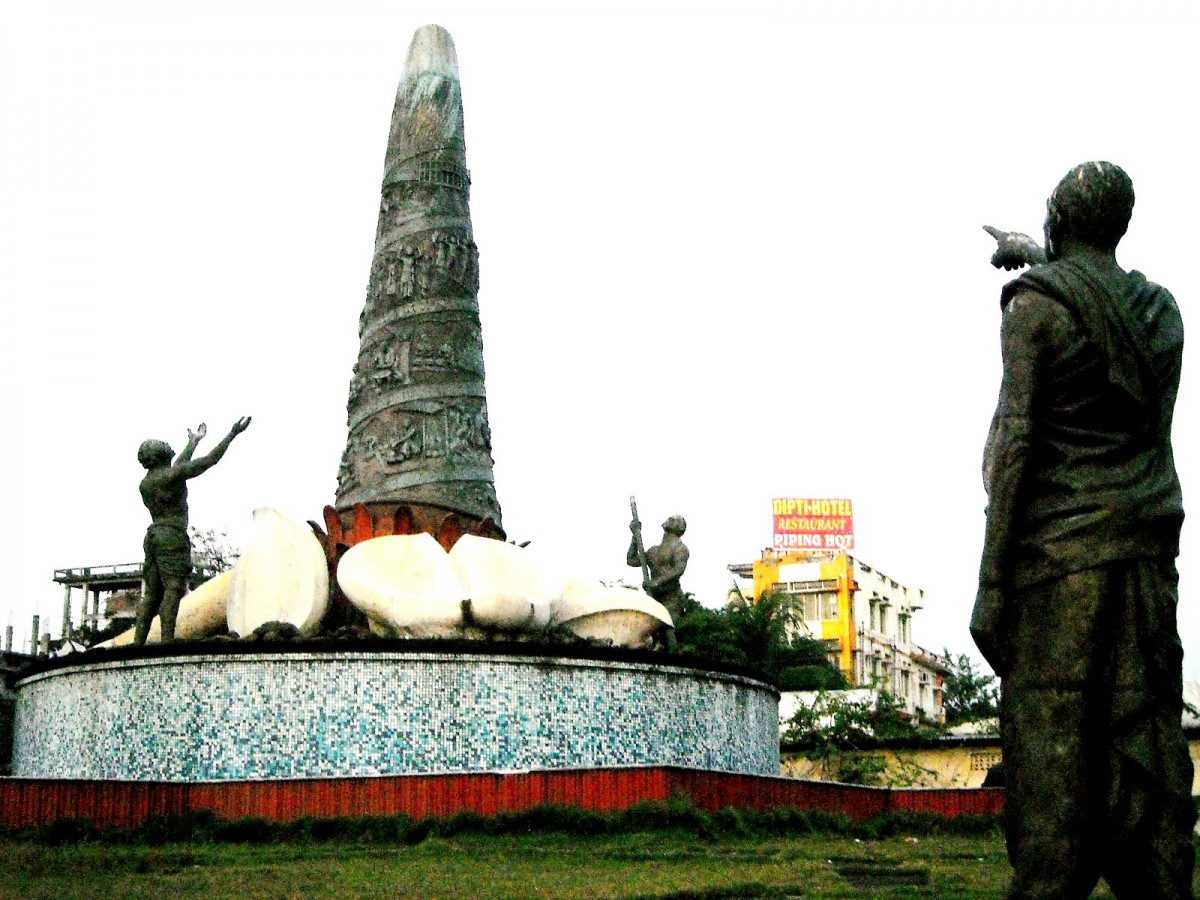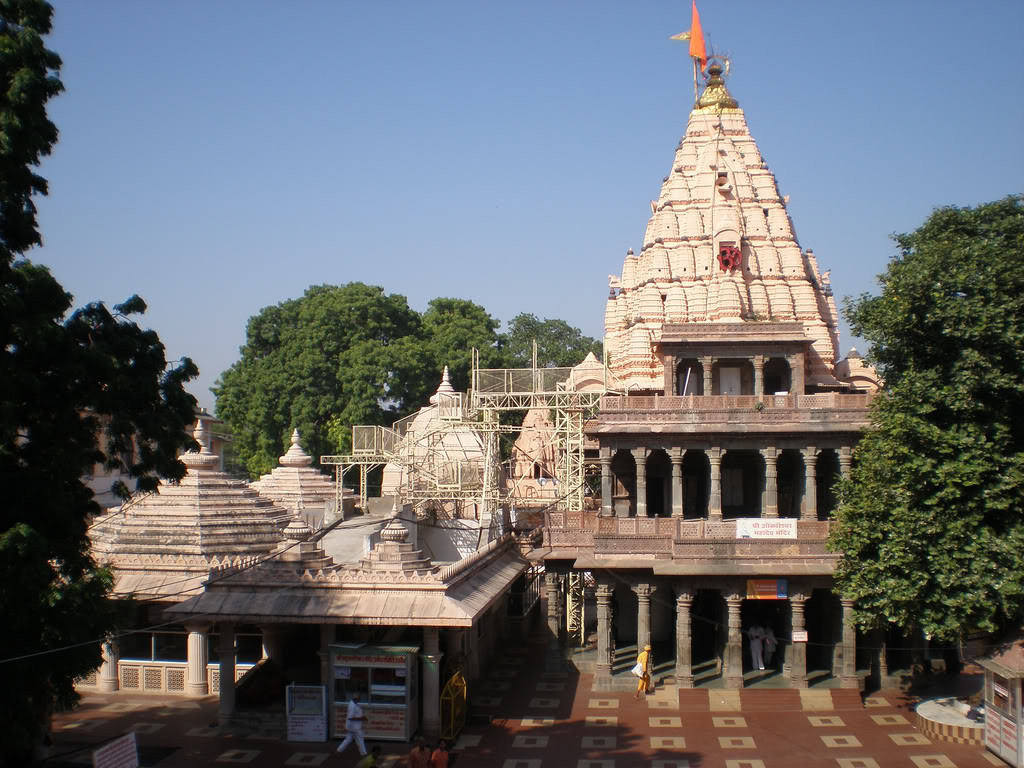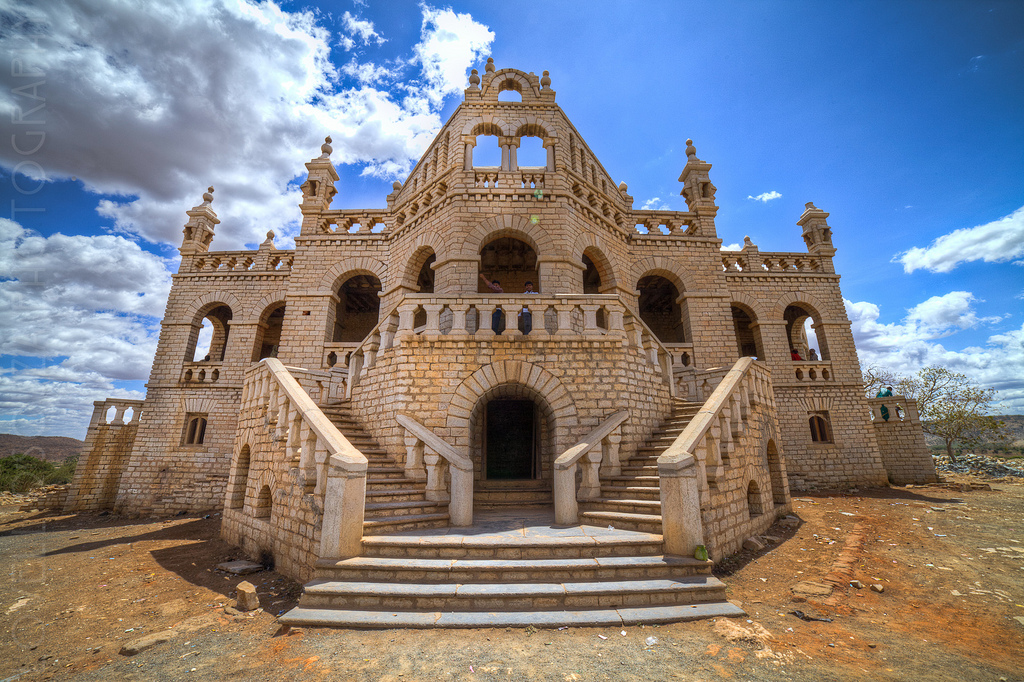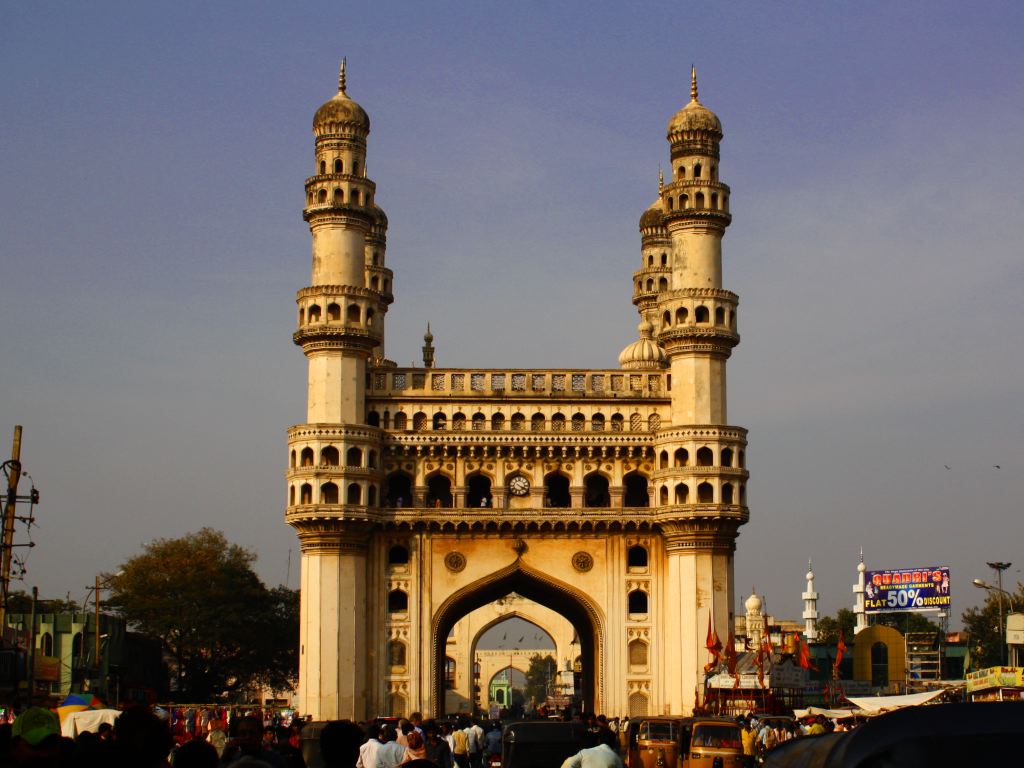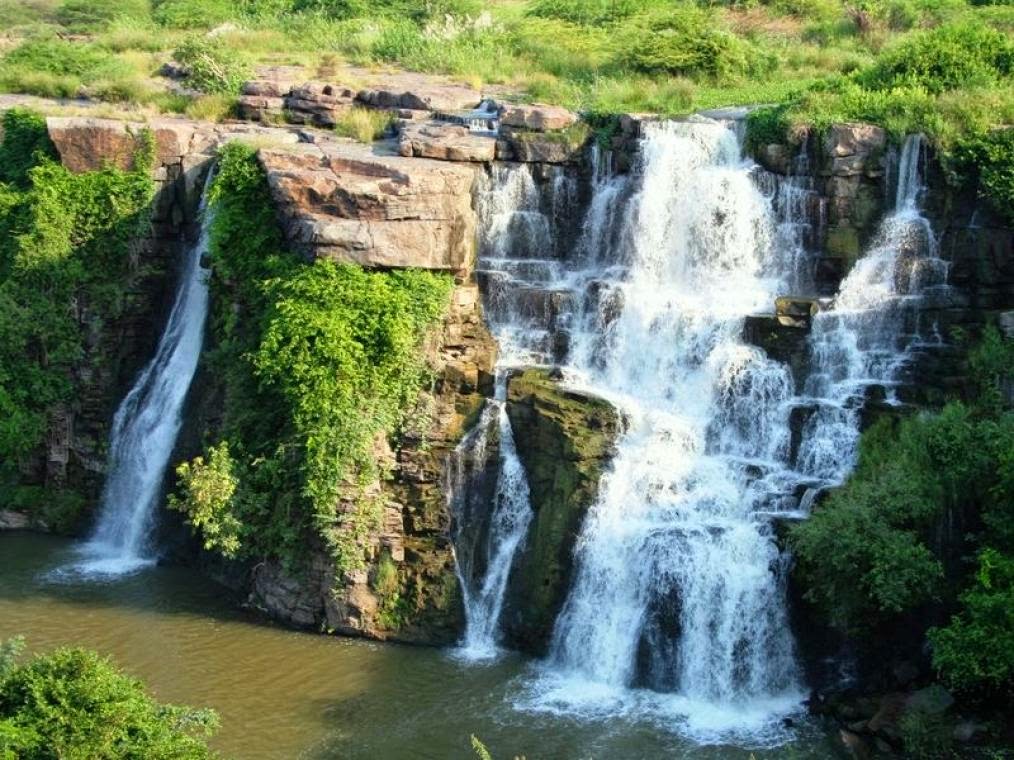
Guntur Tourism and Travel Guide
History of The City: Guntur The village Chejarla is situated at a distance of 15 miles west of Narasaraopet in the Guntur District of Andhra Pradesh. There is a good metalled road for a part of the way and for the rest one can reach the village only by Jeep or by bus. From Narasaraopet every one hover one bus is available. Nearest railway station is Narasarao pet.
The village stands in the plains and is surrounded by a rocky hills and is covered by scrub jungle. The temple here is dedicated to Lord Siva. The deity is called Kapotheswara, after the famous story of Sibi mentioned in 1he Mahabharata,
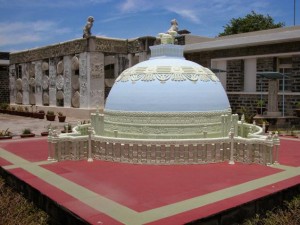
where, ‘he is said to have sacrificed a part of his own body, as an offering to an eagle, which was pursuing a pigeon or a Kapotha, in order to save it from destruction.
This story is a renowned one not only, in Hindu mythology, but also in the Buddhist Jataka tales, which give us the lives of Siddhartha, the Buddha, in his previous Janmas. The Sibi Jataka is as hoary and sacred to the Buddhist, as an embodiment of ‘Saranagata vatsala,’ as Sibi Chakravarti is to the Hindu, as a supreme symbol of ‘Raja Dharma’ which enjoins a king to protect the refugee even at the cost of his own life. This is probably the only temple in the whole of India dedicated to Lord Siva as Kapotheswara.
Till very recently there used to stand outside the south wall of the courtyard of the temple, an enormous Boabad tree, which was 56 feet round the trunk, and which was very hollow inside. The tree collapsed in 1917, and formerly it was much venerated by the pilgrims who visited the temple.
The deity is in Lingakara. Siva is here represented as Kapotheswara, who gave a portion of his own body in order to save a pigeon that took refuge with him.Curiously, in the imago of the Linga there are even today large cavities as if portions have been scooped or cut out, and these are said to be the places of the body, from which the Lord cut off his own flesh, in order to save the life of the Kapotha.
The image is said to be the image of the ‘Kalebara’ of Sibi, with the head cut off, and on top of the Linga, there are still two large vertical cavities.. One of these cavities helps to drain off the Abhisheka Tirtha to an unknown place and even today the smell of raw flesh and blood comes out of this since the God here is a very powerful one. The temple is of the greatest importance to us from the point of view of temple architecture. There are, as is well known, three types of temple architecture, called the Nagara, the Vesara and the Dravida, and the main distinguishing features of these are to be seen only in the Vimana over the main shrine of the temple.??
The temple of Chezerla is a rare exception and this is a temple on the Apsidal model. This Apsidal plan and barrel vaulted structure, is classified in the VastuSastras, as ‘Hasti prasta’ or elephant back. These were originally Buddhist Chaityas and were readjusted for the purpose of Hindu worship, by the introduction of internal walls and upper store) to seclude the Garbha Griha from the rest of the building. The end of the temple takes the form of an apse and in its centre is a white marble Linga.
Guntur The fact that the temple of Sibi is sacred to Buddhism and Hinduism and is built in a unique style, conforming both to the Chaitya hall designs and the Silpa Sastras rules, is proof positive that the temple must have come into existence, at a period of mutual tolerance between Hinduism and Buddhism. A famous inscription in the temple further supports this by Satsabhamalla, the son of Avanitalantavati Mahadevi, the daughter of the king Kandara of the Ananda Gotra line of kings.
The Kandara line of kings is a rare one, and they ruled round about the 4th or the 5th century A.D. Theprovenance of this inscription, therefore, shows that this temple is it existence from the 5th century A. D. even.There are hoary traditions and legends about the temple, which is a famous one in Andhra. The following legend concerning the origin of the temple will be of interest.
In Kashmir, one of the largest and richest of the ancient kingdoms of India, a king named Sibi Chakravarti, son of Mandhata and grandson of Yayati Maharaja, who were
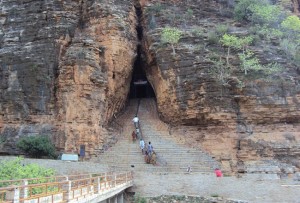
famous kings of the Mahabharata, was ruling the world peacefully and justly. He had two brothers named Mehadambara and Jeemutavahana.
One day Mehadam- bara asked Sibi to give him permission to go on a pilgrimage to all the sacredplaces, shrines and rivers of South India. The king was much pleased with the piety of this brother, and not merely gave him the permission gladly, but also made arrange- ments for a retinue of one thousand and five hundred persoils to accompany him. Mehadambara visited a number of holy places and Tirthas, and at last came to a place called “Cherum Chorla” where many yogis were doing tapascharya in the caves of a hill called Devarakonda.
Mehadambara was so moved by the piety of the yogis, that he staved away at the place for a long time, spending his days in Satsanga, with the yogis. He thereby lost all interest in worldly affairs, and he himself began to renounce the World and take to yoga and tapascharya. Some time later is died and his body was buried on the summit of the hill. Due to his tapascharya his body would not perish, and assumed the form of a linga.?
The people who saw this, built a shrine Upon it and called the linga Mehadam- bheswara. The retinue of the prince who came along with him went back to Kashmir and told the story to king Sibi.
The King became very sad and consulted with his younger brother. Thereupon Jeemutavahana started with an equal number of escorts in order to somehow bring back his brother. After spending many days on the way, Jeemutavahana reached “Cherum Chorla” and when be verified that his brother has been converted into a linga, he too decided to follow his footsteps. , He dismissed his escort and sat as a yogi in tapascharya. The force of his penance was so great that his body reached Kailasa.
The retinue once again went back to Kashmir and informed the king, Sibi that his brother Jeemutavahana also had gone the same way as his other brother Mehadambara. The king now fell into a deep sorrow over the loss of both of his brothers, and handed over the kingdom to his ministers who were instructed to govern the kingdom carefully for some months, so that he himself might visit the place.
The king ultimately reached the place, and on seeing the ‘Linga sareeram’ of his brother, he determined to perform a hundred Yajnas, since the place was so holy and hallowed, that he considered it to be the fittest place for the performance of a hundred Yajnas. If a devotee completes hundred Yajnas, the merit that he wouldget by it, would entitle him to reach the realm of Brahma. Hence the Godsdecided to test whether King Sibi was really pious and steadfast in his devotion, and whether be had that amount of mental detachment, that is necessary for attaining the realm of Gods.
The three Gods, Brahma, Rudra and Vishnu descended to Bhuloka at a spot called Rupanaguntla, which was named so, since the three murthis made them selves visible to the mortal world at that place. They then transformed themselves, Lord Siva as a hunter, Lord Brahma as an arrow, and Lord Vishnu as the bird ‘Kapotha pakshi ‘ Lord Siva as a hunter with his arrow, ran and jumped about. Desiring to shoot the bird. The bird, however, flew rapidly and found refuge in the hands of the king Sibi, seeking his protection. At that time, Sibi was doing his hundredth yajna.?
The hunter thereupon appeared before King Sibi and told him thus: “My Lord, I am a hunter who according to my Dharma has to live on the flesh of birds and animals. I have since, this morning been pursuing the bird to whom you have just now given refuge. I am hungry and thirsty and since according to my Dharma I am to live on flesh, please release the bird, so that I may kill it and cat it.” The king Sibi replied, that his Raja Dharma was to give protection to any one, who sought refuge with him, and that it would not be possible for him to release the bird. Thereupon the hunter remonstrated that the king’s Dharma and his Swadharma were at variance and he asked the king himself to find a solution for it.
The king saw the justice of the demand of the hunter, and told him that be would not renounce his Dharma, but at the same time he would not allow the hunter to starve and therefore, as a compromise he would give flesh from his own body, equal in weight to that of the bird. Thereupon Sibi placed the bird on one scale and with his own bands tore off portions of his body, and placed them in the other scale. Since this incident occurred because the Lords wanted to test Sibi’s sincerity, any amount of flesh from the body of Sibi would not balance the weight of the bird.
There upon King Sibi procured a long knife, and cut his body into two pieces and had one half placed on the scale. The three Lords, Brahma, Rudra and Vishnu assumed their real shapes and appeared before Sibi and restored his yajna and also his life. Lord Sibi desired the place of Kailasa for himself, and for the escort who had followed him and endured with him the hardship of the tapascharya, and also desired that all their bodies should be transformed into lingas to remain for ever In the holy and sacred “Cherum Chorla” Kshetra.
Lord Siva granted these requests and the bodies of Sibi and his followers were transformed into Lingas. A temple was erected over Sibi’s Linga under the name ‘Kapotheswara’
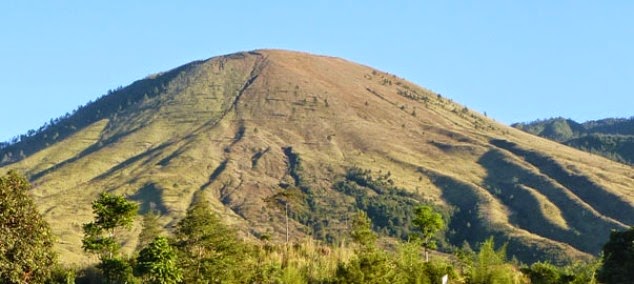
since he gave up his life in support of a Kapotha bird. In support of the legend, it is still pointed out that the white marble Linga has two large holes on the top and small sword marks on the sides. The place Chezerla is full of Sivalingas and these are said to represent the Lingakara. Sareeras of Lord Sibi’s escort.
The main shrine of the Lord is a long Apsidal building with a barrel roof. The floor is below the level of the courtyard. There is only one small entrance in front, which faces the cast. The end of the building takes the form of an apse. In the centre of the apse is the ‘murty’ of the Lord, with the two holes on its crown. There is no hole on the north wall of the temple, which normally exists in every Saivite temple as an exit for the Abhisheka Tirtha. Here the two holes of the Linga them serve the purpose and the Abhisheka Tirtha is drained off to an unknown place. There are a number of halls attached to the front of the main shrine and one of these contains a large ‘Nandi’ facing the entrance. There are any numbers of small shrines round the main temple, which contain lingas. On the northeast side of the temple, there is an excellent specimen of the’Sahasra linga,??? and on the other side of the temple, is a carved stone image representing the ‘Saptha Matrikas’ or the Seven Mothers.
The main festival of this temple is the Sivarathri festival, and the other festivals, which are usually conducted in other Saivite temples, are also observed here, though on a small scale. The temple, though it is slightly off the main road, is still a famous one from the points of view of antiquity, architecture and sanctity. As stated above this is perhaps the only extant temple in India of the Lord Siva as ‘Kapotheswara.’ The Lord is also said to is a powerful one and the local legends state that any prayer that is done with sincerity and purity is generally granted here.
How to Reach?
By Air: The nearest airport is at Gannavaram.
By Train: Guntoor has both broad gauge and meter gauge lines. An important railway junction, it is well connected to and from Macherla, Vijayawada, Machilipatnam, Hubli, Tenali and Repalk.
By Road: Bus services connect Guntur to and from all the important places within and outside the district, including the State headquarters.
Bhavanarayanaswami Temple: 49 km from Guntur, Bhavanarayanaswami temple at Bapatla is dedicated to Lord Bhavanarayanaswami, who came to be known as Bapatla with time. It is the most ancient and famous of all the temples in Guntur district and is of immense historical and architectural importance.
Buddhist Relics And Lord Amareswara Temple: 35 km from Guntur, Amaravati is home to the famous shrine of Amareswara Temple dedicated to Lord Shiva and the world-famous Buddhist sculptures. The three most sacred things here are Krishna River, an important ‘Kshetra’ with a ‘Sthalamahatyam’ and ‘Sri Mahalinga Murthy’, said to be the embodiment of the three sacred principles as one.
Undavalli Caves: 32 km from Guntur, the Undavalli caves located in the village of the same name display solendid rock-cut architectural and sculptural beauties. They are situated in a high hill overlooking River Krishna.
Lam: 8 km from Guntur on Guntur-Amaravati road, Lam is known for its Agricultural Research Station, the Government Livestock Farm and the Chillies Research Station. Another attraction here is the Bhairavakunta tank and a small stone at its side exhibiting nine idols, an image of Vinayaka and a brass image of Anjaneya along with an inscription in Sanskrit in ancient characters carved on a boulder.
Lord Narasimha Temple: 19 km from Guntur, the renowned temple of Lord Narasimha is located on the Hillock at Mangalagiri. The uniqueness lies in the belief of the devotees that the deity accepts only half of the quantity of the ‘Panakam’ (a solution of jaggery in water) offered by the devotees, irrespective of the quantity offered.
Nallapadu: 5 km from Guntur, Nallapadu or Narasingapuram named so after the temple of Narasimhaswami is situated on a hillock and is known for some ancient temples. The Agastheswaraswami temple featuring a decorated ‘Dhvajastambham’ (flag pole), carvings of five hooded `nagas’ (Serpents) and idols of Siva and Bramaramba, his consort and the temple of Sankaracharya is said to belong to the ancient times.
Pondugala: 11 km from Guntur, Pondugala has several temples. However, most important and famous of all is the Gantala Ramalingesvara Swami Temple containing some inscriptions on its pillars in Pali. There is another temple at Bobbanagi in the nearby hamlet of Iyyagaripalem situated on the banks of Dandivagu, contains two inscriptions in Sanskrit and was declared a protected monument.

